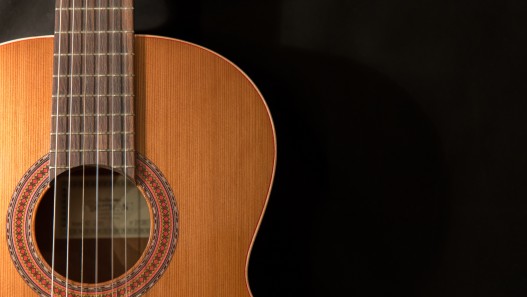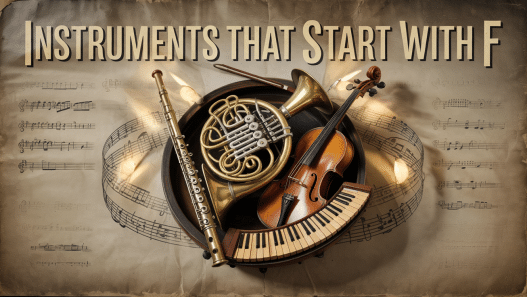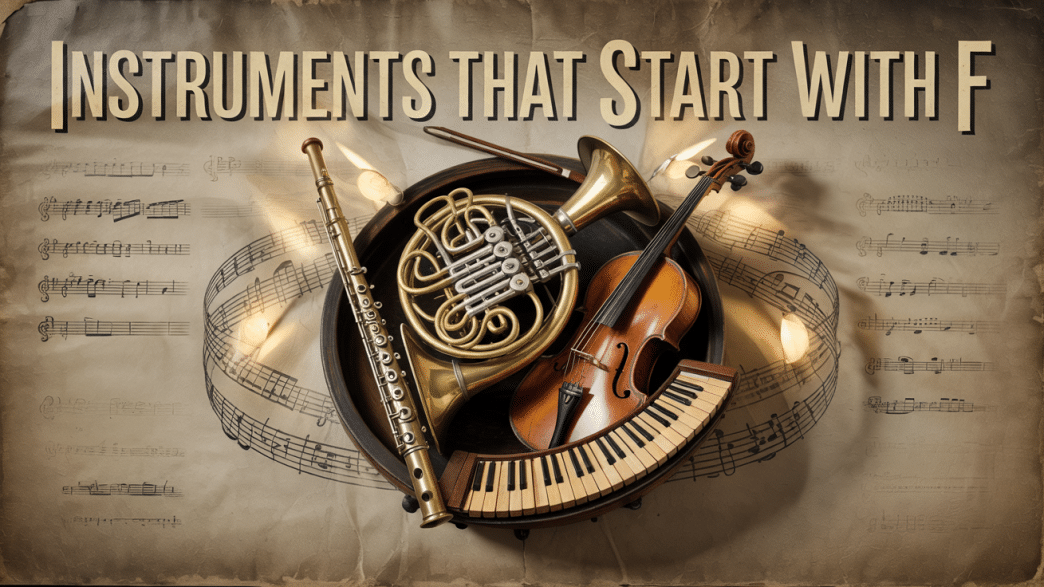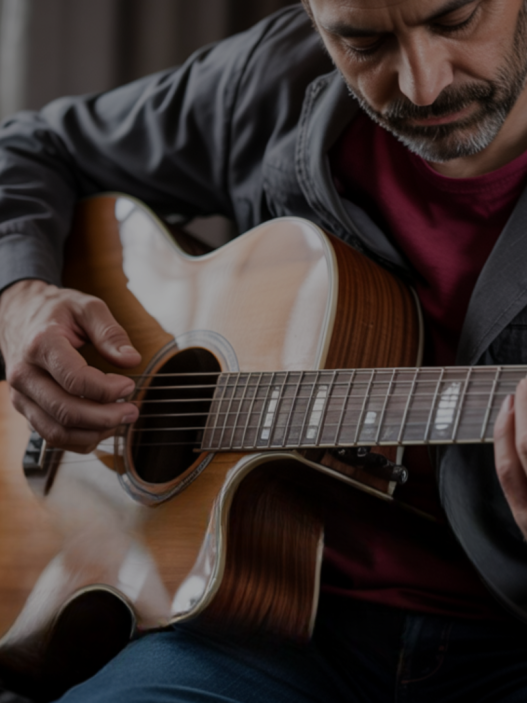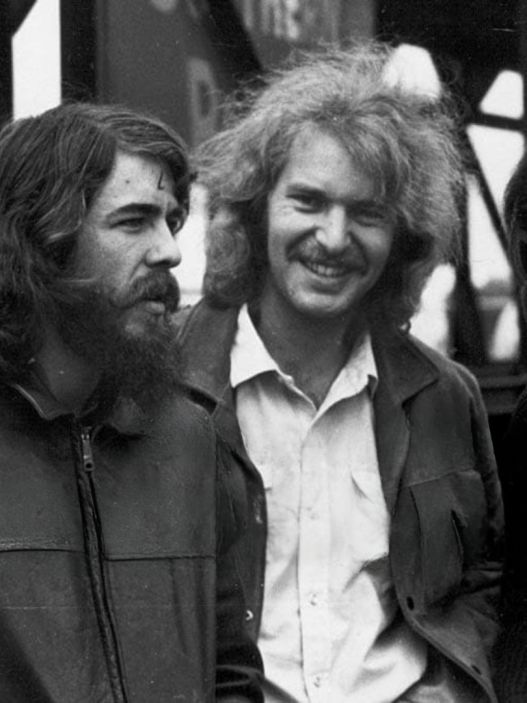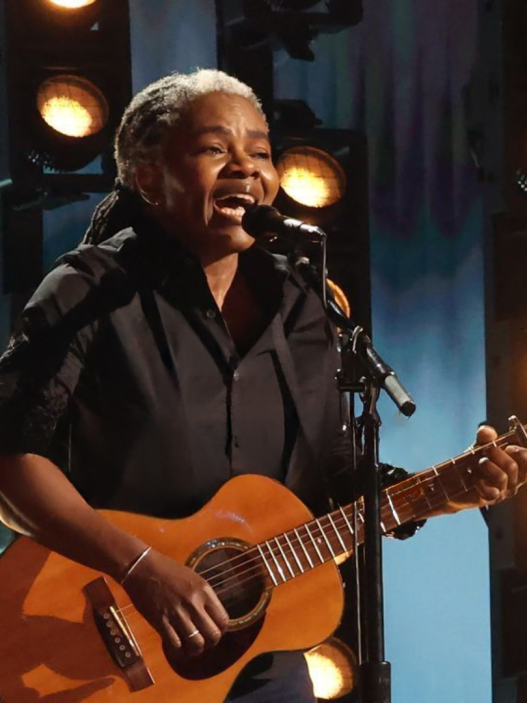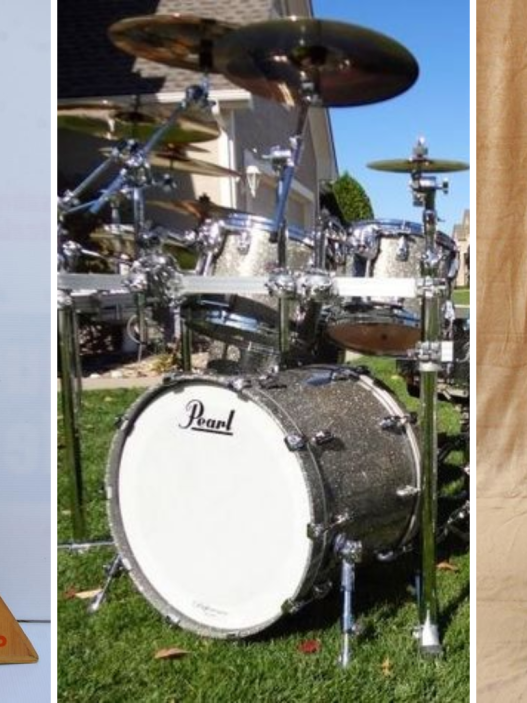Musical instruments often get categorized by letters for practical reasons – it helps music educators organize teaching materials and allows students to learn about instrument families in digestible chunks.
Knowing instruments alphabetically comes in handy for music trivia nights, classroom activities, and expanding musical knowledge.
This blog zooms in on instruments starting with the letter F – from everyday favorites you’ll spot in orchestras to rare specimens from around the world.
Musical instruments beginning with F offer a surprising variety across cultures and musical styles, making them worth getting to know better.
Why Focus on Instruments that Start With “F”?
F-letter instruments show up across virtually every music genre and tradition worldwide. From classical orchestras to folk bands to experimental music, these instruments make their mark.
The letter F itself has a certain music-friendly quality – think of all the musical terms that start with F: forte, fortissimo, falsetto, fret.
F instruments range from the formal (French Horn) to the folksy (Fiddle) to the forward-thinking (Finger Drum Pads).
Looking at instruments by letter is simply a fresh way to approach music education and appreciation, because it breaks down the vast world of musical tools into bite-sized, alphabet-friendly portions.
Well-Known Instruments That Start With F
These popular F-named instruments can be found in orchestras, bands, and music ensembles across the globe. From the concert hall to folk festivals, these instruments have established their place in musical history.
1. Flute
A hollow cylindrical woodwind instrument held horizontally while playing, producing clear, bright tones through a lip plate embouchure that directs breath across an opening, creating vibrating air columns.
Origin: Ancient civilizations worldwide
Type: Woodwind
Genre: Classical, jazz, folk, pop
Interesting Fact: One of the oldest known musical instruments, with specimens dating back 40,000+ years.
2. Fiddle
Though structurally identical to violins, fiddles feature distinctive playing techniques, altered string tensions, and flatter bridges, enabling faster note transitions for lively folk dance tunes and improvisational rural styles.
Origin: Europe
Type: String
Genre: Folk, bluegrass, country, Celtic
Interesting Fact: The term “fiddle” refers to playing style rather than physical differences from a violin.
3. French Horn
A coiled brass instrument with approximately 12–18 feet of tubing wrapped into a circular shape, featuring a conical bore, flared bell, and complex valve system for rich harmonics.
Origin: France/Germany
Type: Brass
Genre: Classical, orchestral, band
Interesting Fact: Players insert their right hand into the bell to adjust pitch and tone.
4. Flugelhorn
A valved brass instrument resembling an enlarged cornet with broader tubing throughout its length, creating distinctively mellow, dark tones favored for jazz ballads and solo passages within brass ensembles.
Origin: Germany
Type: Brass
Genre: Jazz, brass bands
Interesting Fact: Its name comes from German flügel (wing or flank) + “horn.”
5. Fife
A small, high-pitched cylindrical woodwind with six finger holes, historically crafted from wood but now often plastic, producing penetrating tones that carry over battlefield noise and outdoor processions.
Origin: Switzerland/Germany
Type: Woodwind
Genre: Military, traditional, folk
Interesting Fact: Historically paired with drums in military “fife and drum” corps.
6. Finger Cymbals
Small, paired metal discs (typically brass or bronze) measuring 1.5–2 inches in diameter, worn on thumbs and middle fingers, creating rhythmic accents through precise striking motions during dance performances
Origin: Middle East
Type: Percussion
Genre: Middle Eastern, belly dance music
Interesting Fact: Known as “zills” in Turkey and “sagat” in Egypt.
7. Frame Drum
A circular percussion instrument consisting of a membrane stretched across a wide wooden hoop, played with hands or soft beaters, producing varied tones through different striking techniques and positions.
Origin: Middle East, Mediterranean
Type: Percussion
Genre: Folk, traditional, world music
Interesting Fact: One of the oldest drum types, depicted in Sumerian art from 3000 BCE.
8. Fretless Bass
An electric bass guitar lacking metal fret dividers on the fingerboard, requiring precise finger placement while enabling fluid note transitions, pitch bending, vibrato effects, and microtonal playing capabilities.
Origin: United States
Type: String
Genre: Jazz, funk, fusion
Interesting Fact: Popularized by Jaco Pastorius in the 1970s.
9. Finger Drum Pad
Pressure-sensitive electronic percussion controllers featuring rubber or silicone pads that trigger digital samples when struck, offering producers and performers portable rhythm.
Origin: United States
Type: Electronic percussion
Genre: Hip-hop, electronic, EDM
Interesting Fact: Modern versions often include sampling and looping capabilities.
10. Free Bass Accordion
An accordion variant featuring a piano or button keyboard for the right hand and individual bass notes on the left, rather than traditional preset chord buttons, enabling complex bass lines and harmonies.
Origin: Europe
Type: Keyboard, wind
Genre: Folk, classical, jazz
Interesting Fact: Allows players to play individual bass notes rather than just preset chords.
11. Fujara
An extraordinarily long overtone flute featuring three finger holes, traditionally played by Slovak shepherds while standing, with notes produced through harmonic overblowing techniques creating haunting pastoral tones.
Origin: Slovakia
Type: Woodwind
Genre: Folk, traditional
Interesting Fact: Can be over 6 feet long and is protected by UNESCO as cultural heritage.
12. Frula
A traditional Balkan end-blown flute carved from a single piece of wood, featuring six finger holes and a distinctive whistling embouchure that creates piercing, ornamented melodies.
Origin: Serbia, Balkans
Type: Woodwind
Genre: Balkan folk music
Interesting Fact: Often played with one hand while the other plays a drum.
13. Fado Guitar
A Portuguese twelve-string guitar with a distinctive teardrop-shaped body, fan bracing, and unique tuning system, featuring a characteristic bright timbre essential for accompanying the emotionally expressive vocal performances.
Origin: Portugal
Type: String
Genre: Fado
Interesting Fact: Has a distinctive teardrop shape and unique tuning system.
14. Fiddle-banjo
An experimental hybrid instrument combining a violin’s neck, playing technique, and bowed strings with a banjo’s resonating body and drumhead, creating unique timbres that blend string resonance with percussive.
Origin: United States
Type: String
Genre: Folk, experimental
Interesting Fact: Blends the bowing technique of fiddle with banjo body resonance.
15. Folk Harp
A smaller, portable harp lacking pedal mechanisms, typically featuring 22-36 strings arranged in diatonic tuning patterns, played by plucking strings with fingers to produce gentle, resonant tones in traditional settings.
Origin: Various (Celtic regions, Latin America)
Type: String
Genre: Folk, Celtic, Latin
Interesting Fact: Typically has 22-36 strings and no pedals.
Lesser-Known Instruments That Begin With F
Beyond the familiar F instruments, there exists a fascinating world of lesser-known musical treasures.
These instruments represent diverse cultural traditions and specialized playing techniques that showcase human ingenuity in creating sound.
16. Fipple Flute
A family of wind instruments featuring a whistle-like mouthpiece with an internal air duct that directs breath against a sharp edge, creating sound without complex embouchure techniques.
Origin: Various cultures
Type: Woodwind
Genre: Folk, traditional
Interesting Fact: Includes recorders, penny whistles, and ocarinas.
17. Feadóg
A simple six-hole Irish tin whistle typically pitched in D, featuring a metal or plastic cylindrical body with a plastic fipple mouthpiece, producing bright, clear tones fundamental to Irish traditional melodies and ornamentation.
Origin: Ireland
Type: Woodwind
Genre: Irish traditional, Celtic
Interesting Fact: Essential instrument in Irish sessions and folk bands.
18. Fretted Dulcimer
A trapezoid-shaped string instrument with metal strings stretched over a fretted fingerboard, played horizontally on the lap by strumming with a pick while pressing a noter against strings.
Origin: Appalachia, United States
Type: String
Genre: Folk, Appalachian music
Interesting Fact: Typically placed on the lap or a stand while playing.
19. Fujara Piccolo
A miniaturized version of the traditional Slovak fujara, measuring approximately half the standard length while maintaining proportional bore dimensions, producing brighter, higher-pitched overtones.
Origin: Slovaki
Type: Woodwind
Genre: Folk, traditional
Interesting Fact: More portable than its larger relatives while maintaining the characteristic sound.
20. Fujara Contra
The largest and lowest-pitched fujara family member, featuring an exceptionally wide bore and extended length, producing cavernous bass tones that serve as foundational drones or slow melodic lines.
Origin: Slovakia
Type: Woodwind
Genre: Folk, traditional
Interesting Fact: Produces the deepest tones in the fujara family.
21. Fujara Bass
An enlarged variation of the traditional fujara with significantly wider bore and longer body, producing profoundly deep, resonant tones, an octave lower than standard fujaras, requiring greater breath control.
Origin: Slovakia
Type: Woodwind
Genre: Folk, traditional
Interesting Fact: Creates deeper tones than the standard fujara.
22. Fingerstyle Guitar
A comprehensive playing approach where guitarists use individual fingers rather than picks, enabling simultaneous bass lines, harmony, and melody articulation through specialized techniques including fingerpicking & percussion.
Origin: Various
Type: String/technique
Genre: Folk, classical, jazz
Interesting Fact: Allows simultaneous bass, harmony, and melody lines.
23. Foot Tambourine
A crescent-shaped percussion accessory featuring small metal jingles mounted on a curved frame, designed to strap around the ankle or foot, allowing musicians to create rhythmic jingle accompaniment.
Origin: Modern adaptation
Type: Percussion
Genre: Various
Interesting Fact: Popular with singer-songwriters who play other instruments simultaneously.
24. Ferrinho
A Portuguese percussion instrument consisting of a notched metal rod or corrugated metal sheet played by scraping with a metal stick, creating rhythmic rasping sounds.
Origin: Portugal
Type: Percussion
Genre: Portuguese folk
Interesting Fact: Made from a notched metal bar played with a metal rod.
25. Fangufangu
A traditional Tongan nose flute made from bamboo sections with a hole near one closed end where players blow through their nostril, creating soft, intimate melodies historically used in courtship rituals and royal entertainment.
Origin: Tonga
Type: Wind
Genre: Tongan traditional music
Interesting Fact: Traditionally played by young men as part of courtship rituals.
26. Fingerboard Synthesizer
A flat, touch-sensitive electronic controller resembling a stringless fingerboard that translates finger positions and movements into MIDI data, enabling musicians to simulate string instrument techniques.
Origin: 20th century
Type: Electronic
Genre: Electronic, experimental
Interesting Fact: Uses capacitive touch technology similar to smartphone screens.
27. Fire Organ
An experimental instrument where controlled flames of varying heights create sound waves through combustion, producing unique tones as heat affects air columns within resonating tubes or chambers.
Origin: Modern experimental
Type: Experimental
Genre: Avant-garde, sound art
Interesting Fact: Works on the principle that flames create sound waves when contained.
28. Falsetto Voice
A vocal technique where singers constrict vocal folds while allowing air passage through partially closed glottis, producing higher-pitched tones than normal range through oscillation of vocal fold edges.
Origin: Universal
Type: Vocal technique
Genre: Various (popular in R&B, soul)
Interesting Fact: Achieved by vibrating only the edges of the vocal cords.
29. Fretted Zither
A box-shaped string instrument featuring multiple strings stretched across a shallow wooden body with metal frets beneath melody strings, allowing precise note placement while other strings provide drone accompaniment.
Origin: Europe, specifically Alpine regions
Type: String
Genre: Folk, Alpine music
Interesting Fact: Unlike guitar frets, zither frets only affect certain strings.
30. Fujara Flute
An indigenous Slovak shepherd’s flute recognized as Intangible Cultural Heritage by UNESCO, featuring characteristic overtone playing techniques that create haunting melodies expressing mountain solitude.
Origin: Slovakia
Type: Woodwind
Genre: Folk, traditional
Interesting Fact: UNESCO listed it as Intangible Cultural Heritage in 2008.
How to Choose the Right F-Instrument for You
Selecting an F-instrument depends on several factors:
- Musical background: Beginners might find the fife or finger drum pads more approachable than the French horn
- Musical interests: Fiddle suits folk enthusiasts while flugelhorn appeals to jazz fans
- Cost considerations: Frame drums and fifes tend to be more affordable, while French horns represent a bigger investment
- Size and portability: Finger cymbals travel easily, while free bass accordions require significant space
- Physical attributes: Finger drum pads work well for those with good dexterity, while the fujara might challenge shorter players due to its length
- Try before buying: Whenever possible, test instruments and consider rental options for pricier instruments
Taking time to consider these factors will help you select an F-instrument that fits your musical goals, skill level, and practical constraint, leading to a more satisfying and sustainable musical practice.
Final Notes on F-Starting Instruments
The world of F-instruments spans from concert halls to folk festivals, from ancient traditions to modern music studios.
These instruments offer something for everyone, accessible options for newcomers, and challenging possibilities for seasoned musicians.
The variety shows how creative humans have been in crafting sound-making tools across time and cultures. Ready to try one?
Local music shops, community classes, and online tutorials make starting easier than ever. Which F-instrument catches your ear?
Share your favorite in the comments or tell us about an F-instrument experience that struck a chord with you!
Continue your musical alphabet pursuit with our other instrument guides: C instruments, H instruments, I instruments, and J instruments.






